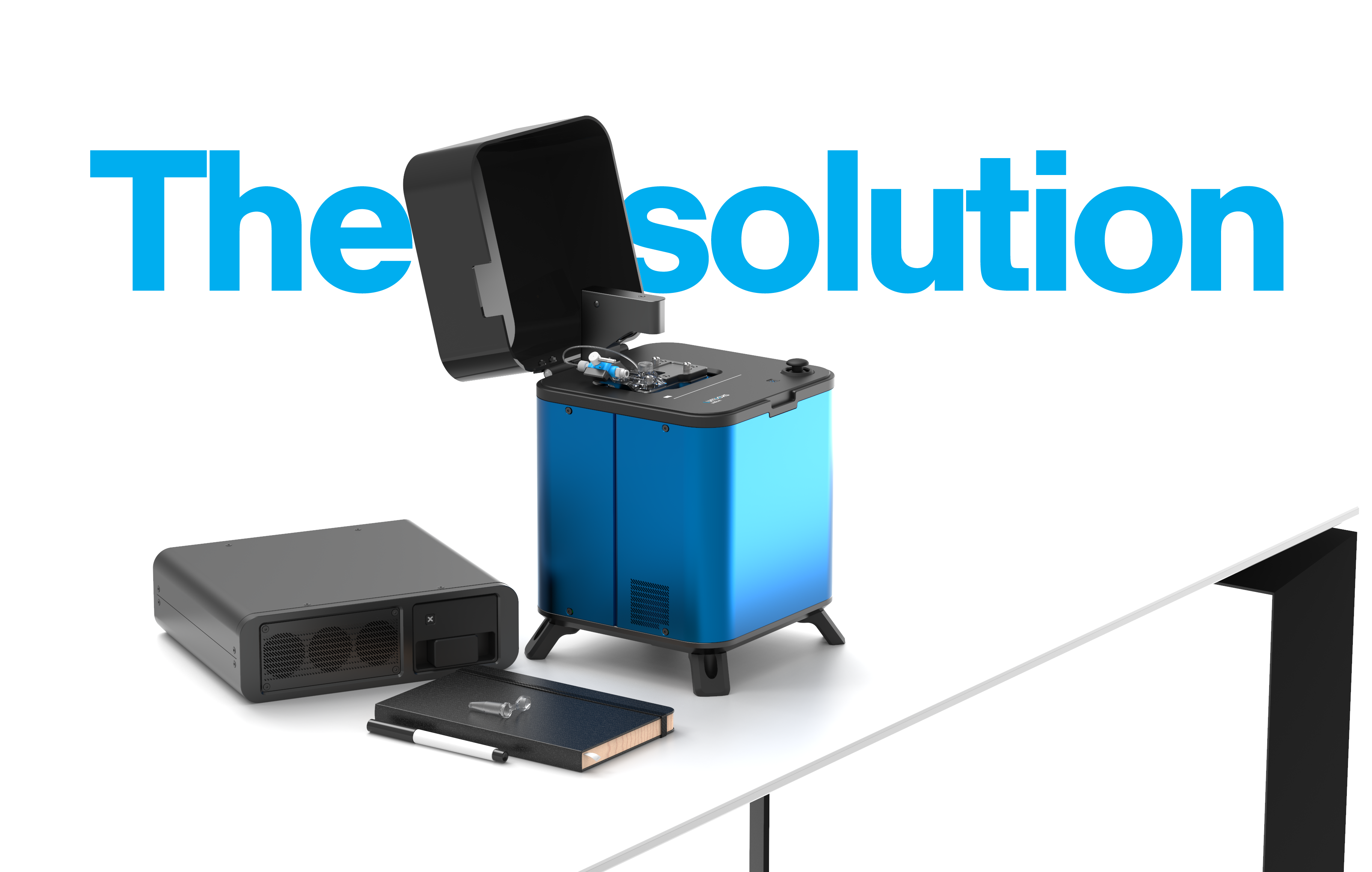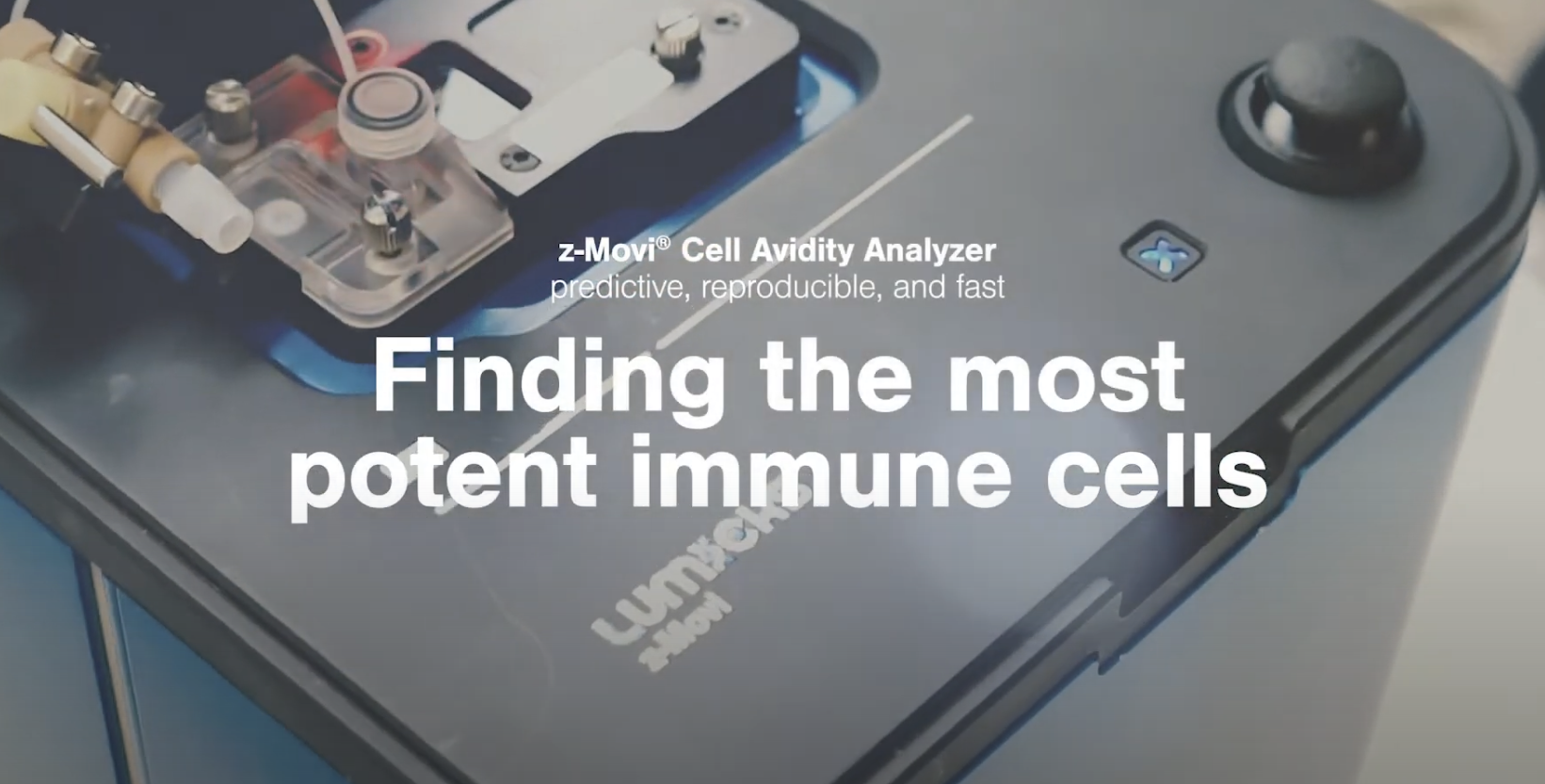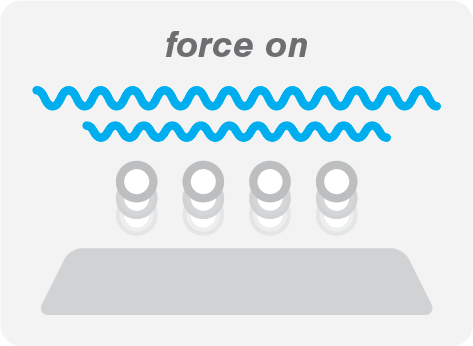
How does it work in practice?
It all starts with the Acoustic Force Spectroscopy principle
At the heart of the z-Movi technology, inside the microfluidic chip, you will find the piezo element that generates resonant acoustic waves. These ultrasound waves are the foundation of cell avidity analyses, as they can pull cells vertically toward the first acoustic node where the force is zero. You can easily control the force magnitude of the waves by regulating the voltage.
Working principle
Effector cells will detach from the monolayer in a force-dependent manner and accumulate at the acoustic node. You can follow the detaching of the fluorescently labeled effector cells from the top view of the flow channel.
Figures a-f show the force-induced detachment of fluorescent effector cells establishing low avidity and high avidity interactions. Low avidity effector cells will rapidly release from the target cell monolayer (a-c, green trendline and column in the graphs below) and gather at the acoustic nodes (c), while high avidity effector cells require larger forces to rupture the binding strength (d-f, orange trendline and bar in the graphs below).
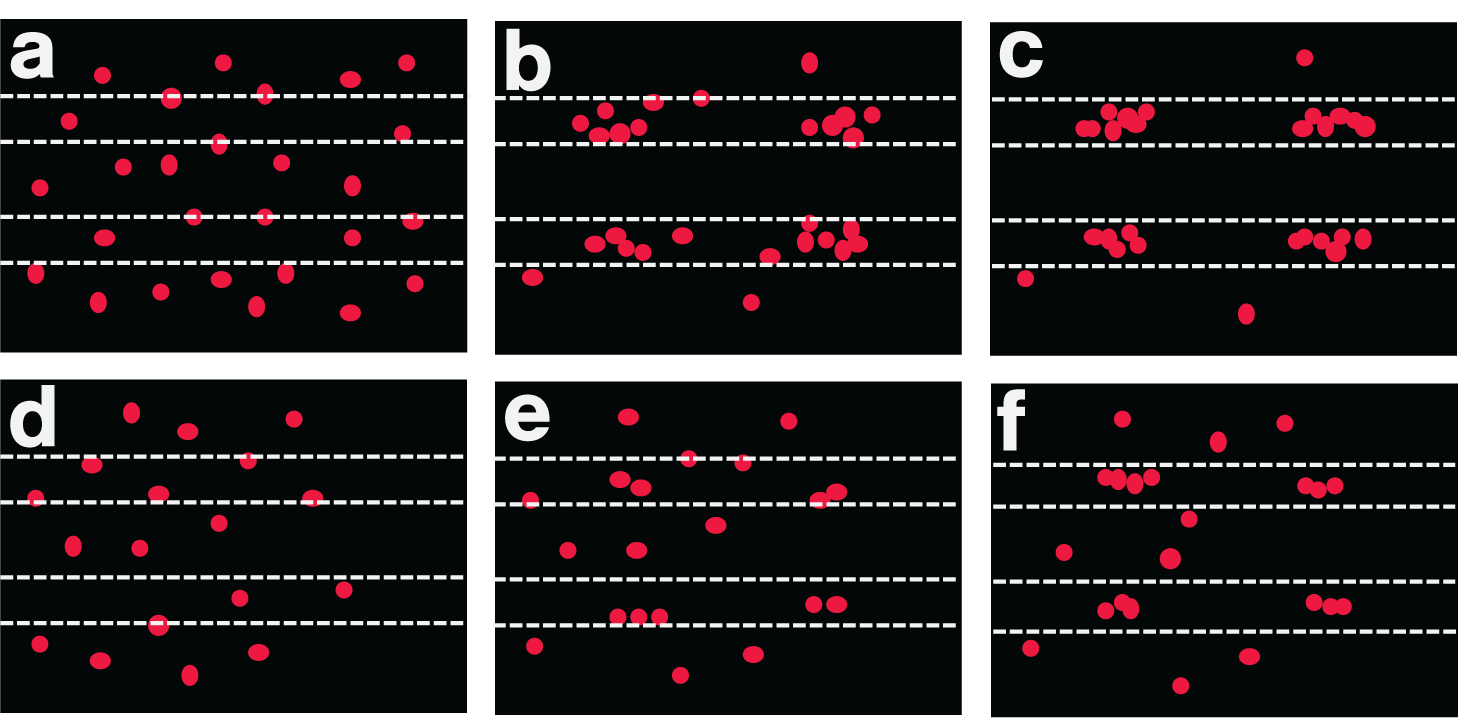
Extensive data analysis options for meaningful and predictive results
Meanwhile, the z-Movi records the corresponding rupture forces of each effector cell. The avidity score describes the relative differences between different populations.
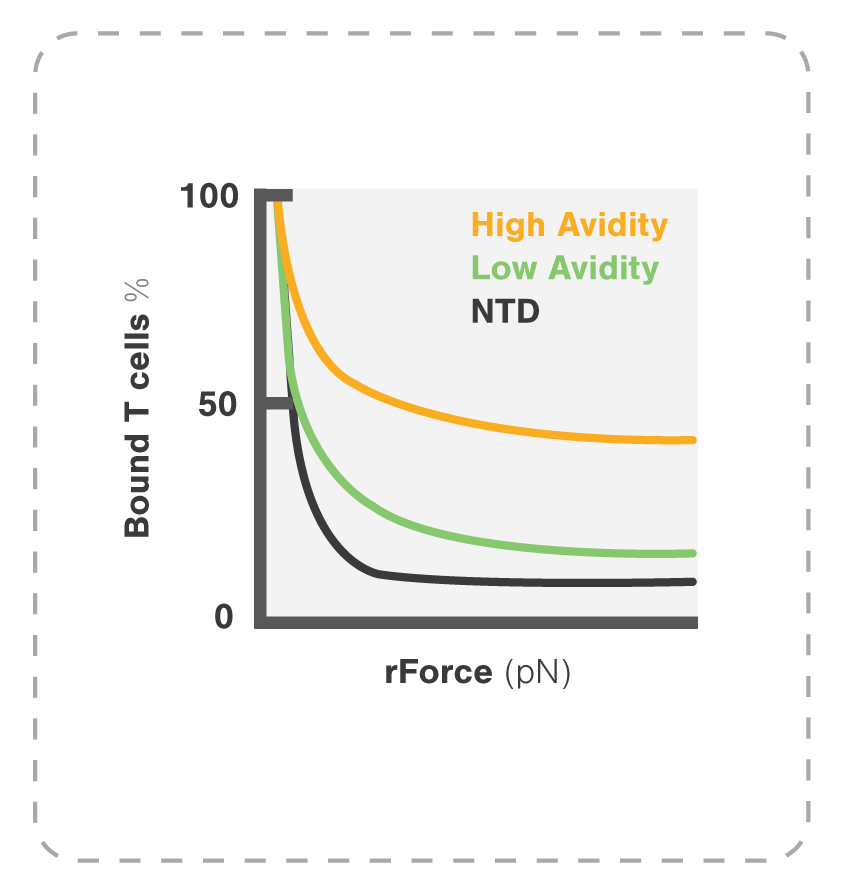
Avidity curves
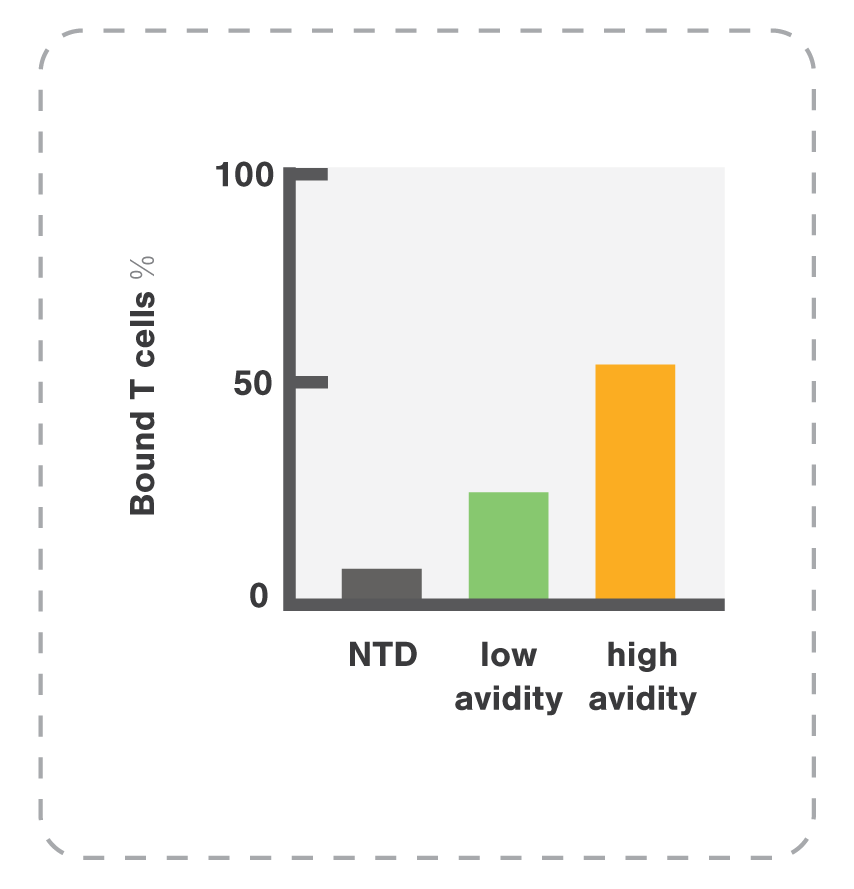
Bar graphs
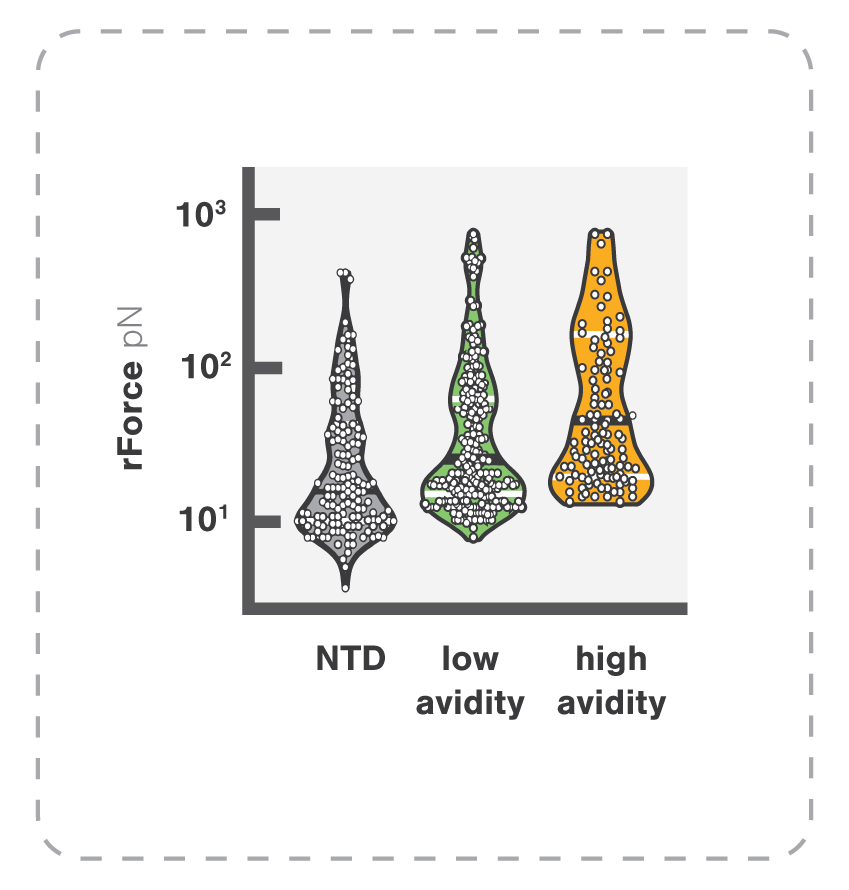
Violin dot plots
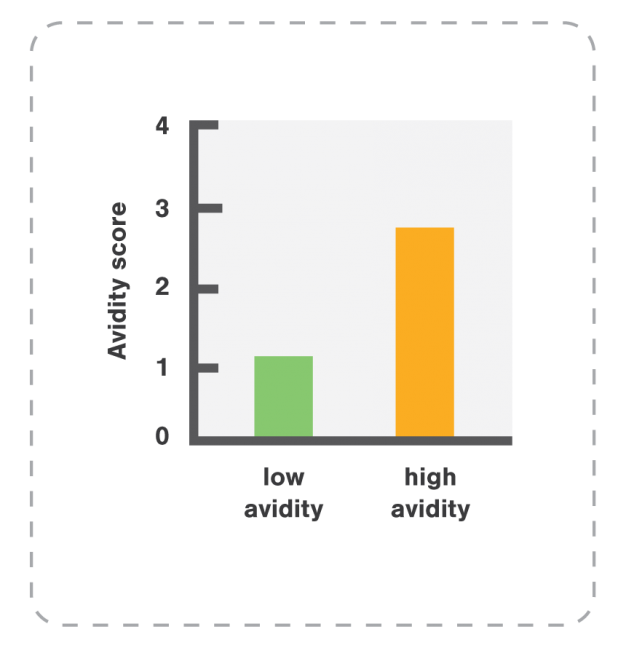
Avidity scores
Rapid experiments with the optimized workflow
We have optimized the workflow of the z-Movi to facilitate the user experience and provide you with reliable, reproducible, and fast results. The z-Movi Chip is specialized to simplify cell culturing and maintain your samples in physiological conditions while you perform the experiments. Once you have performed one run of analyses, you can simply flush in a new batch of effector cells – up to 5 times!
References
- Sitters et al. (2015) Acoustic force spectroscopy. Nature methods
-
Kamsma et al. (2018) Single-Cell Acoustic Force Spectroscopy: Resolving Kinetics and Strength of T Cell Adhesion to Fibronectin. Cell Reports
Our solution
The z-Movi® Cell Avidity Analyzer is a solution for researchers to determine cell avidity, which has been notoriously difficult to measure until now. Through avidity measurements, the z-Movi can help researchers investigate cell interaction properties that correspond to immune cell response in a predictive, reproducible, and fast manner. All this at a high-throughput and single-cell level, without compromising cell viability.
Being able to measure these interactions provides researchers valuable information and enables them to select best candidates at an early stage. This informed selection from the start can improve their success rate dramatically.
Curious to learn more?
